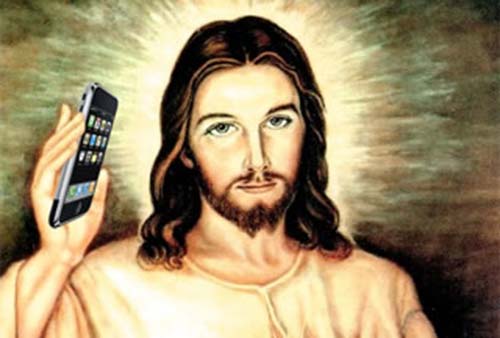
The invention of the printing press disrupted Christian history. It was integral to shaping the face of Christianity as it is now.
The invention of the internet, personal computers, and the smart phone are today’s disruptors – but, in general, church is struggling to catch up. Older people generally are slow to catch on to the rapidly changing digital world, deprecate it, disdain it, or express disinterest. And – at least in part – church demographic mirrors (as at least partial cause and effect) this ageing.
Church generally fails to be present in the place where most people now live – in the digital world. My own digital presence is having to keep moving. Blogs still have value, but liturgy.co.nz, my original online presence, is not the percentage significance it once was, even though it normally gets a thousand visitors a day. Twitter isn’t what it once was. Gone are the days when I could suggest my 65,000 followers to look at something and 5% of them would do so. Latest I heard, only 7% of Kiwis use Twitter. Facebook still has strengths, but again, it generally has an older age group. Instagram is where younger people now congregate.
The majority of people are now looking at the digital world using a smart phone. The cry to take your videos landscape has given way to the plea to take your videos portrait. And videos – short ones – Reels are increasingly important. It is an area I am exploring as I settle into being Acting Dean: creating Reels by clipping from within sermons (Quick Time is an easy starter for this – or you can do it on your phone) or simply making a short Reel on your phone (check out my example here). Reels are complemented by carousels (a set of images) and Stories (images that are there for a short period).
This is not new. There was a Cathedral in the virtual world of Second Life (here and here) in 2007 – 16 years ago. And that was featured at Lambeth in 2008. But we didn’t have the discussions we could and should have had then (and I urged them on this site) so that we were caught on the hop when Covid hit and even a simple “spiritual communion” rite was not forthcoming formally from within our church. And we only then began discussing whether consecration can happen by placing bread and grape juice in front of a video recording on a cell phone. A discussion that has petered out with the dropping of face masks.
Video phoning and conferencing has been one of Covid’s gifts to the ageing church. And live-streaming and video recording of services is also de rigour now. But I’m unaware of serious studies whether this is attracting new regulars to IRL worship (they can check out what they might encounter before coming) in significant numbers or if it is part of causing Christian worship numbers to continue to decline (if you can watch your favourite preacher and listen to your favourite choir at home on the couch in your pyjamas – why go to the dull sermon, poor singing, and annoying person X at your local church?) Certainly, live-streaming is there for those unable to be present, helping them to continue to sense they are part of the community they regularly worship with. And praying daily by zoom or other video conferencing is a wonderful option.
If your church has a social media presence, you need to encourage congregants to regularly click like, share, and comment. This will push your content beyond the boundaries of your digital church walls.
We need to be talking more about the spread of fake news (it spreads far faster than the truth), online misinformation about Christianity, deep fakes, digital addiction, scams and phishing.
And we need to move away from our church social media being simply a notice board for church. By this I mean: most of church presence online is attempting to drag people into IRL services, telling people what has happened in church services and encouraging people to come to services. That is good. But we have so much to offer, and our social media should be offering insights and wisdom, comfort and encouragement, that can be drawn on by people who will never step through our doors.
What else, positive and negative, do you think the digital world connects to the church, to Christianity?
Do follow:
The Liturgy Facebook Page
The Liturgy Twitter Profile
The Liturgy Instagram
and/or sign up to a not-too-often email



Very glad to see you tackling this topic. You’re spot-on to identify online as a place in which the church can choose to be, and raise some interesting points about the role of Covid. To make the remaining question explicit: what does it mean to _be church_ in the online world?
I agree also about setting up the online view as a contrast (possibly opposed) to RL is unhelpful.
Using IG reels sounds interesting, but don’t look to pin your hope on any one social network and don’t put them first – they all have their demographic, purpose and popularity over time. Some of us have long moved entirely away from tw*tter to Mastodon – wanna play chase? 🙂
Here’s one idea: have you encountered https://www.sanctuaryfirst.org.uk/ ? Run by the Church of Scotland, it seems to be an ongoing collation – a place of resources – involving daily worship, music, blogs, podcasts, discussion. From such a place can social media spin-out.
Thanks so much, Tim. Especially for the link also – one I had not encountered. Easter Season blessings.